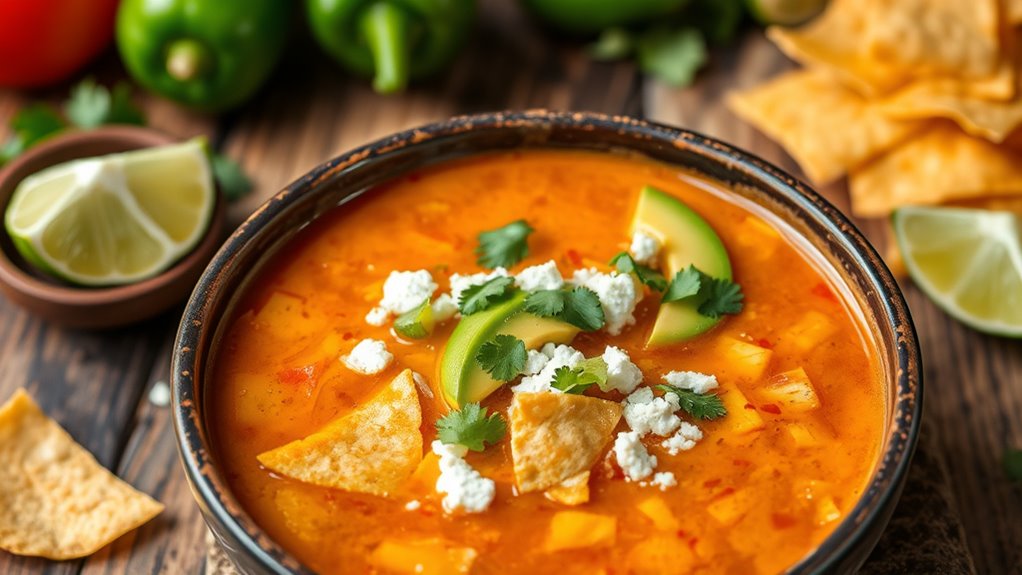To recreate a Border-inspired Chicken Tortilla Soup, start by browning seasoned chicken in a little oil, then sweat onions and garlic to build aroma. Stir in crushed tomatoes, chicken broth, and optional green chiles for a gentle chili kick, letting flavors mingle. Add corn, black beans, and spices like cumin and chili powder, then simmer until the chicken’s tender. Finish with lime, cilantro, and crispy tortilla strips for contrast—your bowl will hint at a deeper, restaurant-style depth as you keep exploring.
Ingredients and Quantity
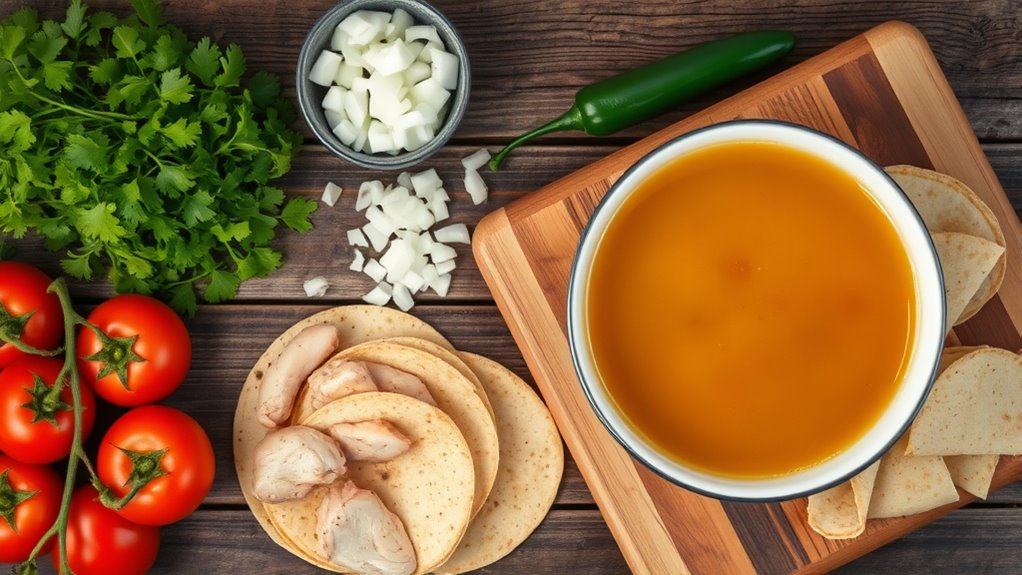
Here are the core ingredients you’ll need, and the quantities you’ll rely on, to build a satisfying pot of chicken tortilla soup: boneless, skinless chicken breasts or thighs (about 1 to 1.5 pounds), canned crushed tomatoes (28 ounces), chicken broth (4 to 6 cups), onion (1 medium, finely chopped), garlic (2 to 3 cloves, minced), canned green chiles (4 ounces, optional for heat), corn (1 cup, fresh or frozen), black beans (1 can, drained and rinsed, optional), olive oil (1 to 2 tablespoons), chili powder (2 teaspoons), cumin (1 teaspoon), paprika or smoked paprika (1/2 teaspoon), salt to taste, pepper to taste, and fresh cilantro (for garnish) plus lime wedges and tortilla strips for serving.
| Chicken varieties | Tortilla types |
|---|---|
| white meat, dark meat, or mix | corn or flour, crispy or soft |
Preparations
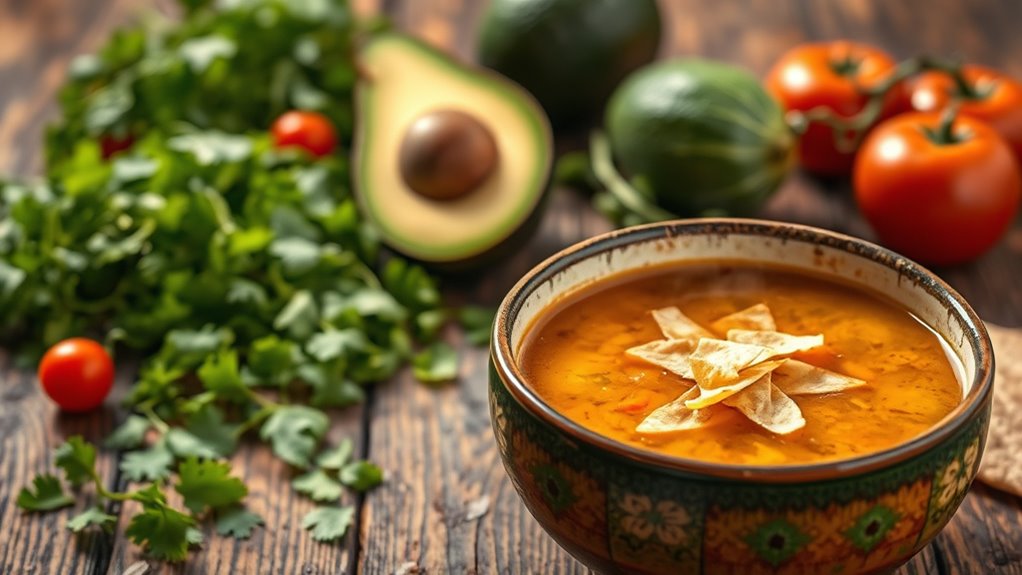
Before you jump in, gather everything you’ll need and set up a clean, organized workspace: trim the chicken, pat it dry, and season lightly with salt and pepper to boost flavor from the start. In this Preparations phase, you’ll pace your steps like a careful investigator, noting each move to preserve integrity. Check your spice selection for balance—think warmth, brightness, and costless aroma—so nothing masks the tomato’s bite. Dice onions, bell peppers, and garlic with a steady rhythm, letting colors tell the story of freshness. Use this moment to confirm ingredient freshness: onions firm, peppers vibrant, cilantro crisp. Let mise en place guide you, not rush. Your method becomes evidence: controlled, deliberate, and ready to reveal the soup’s complexity.
Kitchen tools or Kitchenware Required
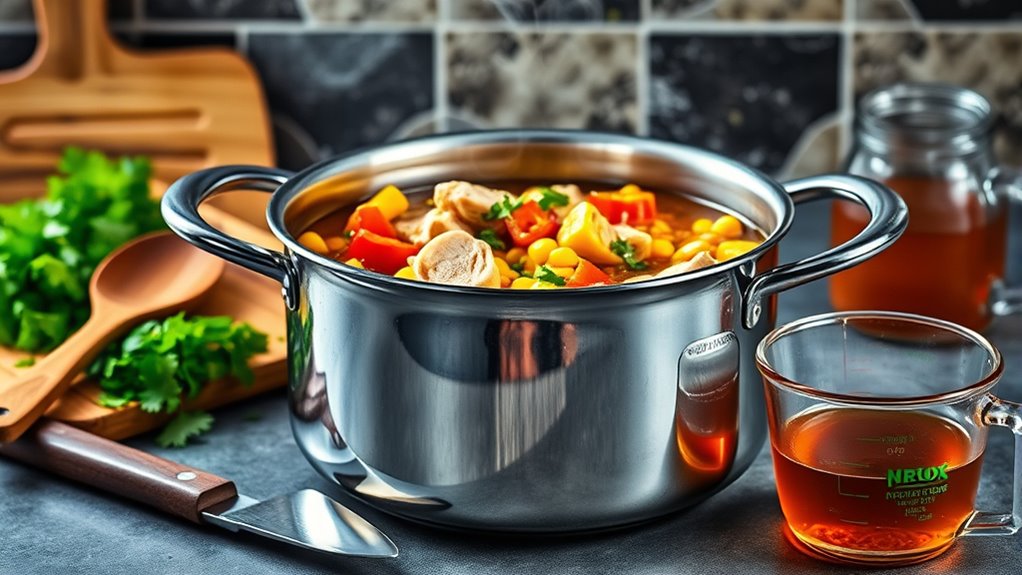
You’ve trimmed and seasoned with care, so now you’ll set up a reliable toolkit that keeps the workflow clean and predictable. In this section, you assess must-haves without clutter, focusing on efficiency and feel. Your kitchen gadgets and cooking utensils should thread seamlessly into your routine, not dominate it. A small set of dependable tools will arm you for any step, from chopping to simmering. Choose sturdy pans, a sharp knife, a dependable whisk, and a ladle that handles heat. The aim is freedom: effortless motion and clear signals. Table below suggests a minimal, balanced kit.
| Category | Item |
|---|---|
| Essentials | Knife, cutting board, pan |
| Aids | Ladle, spoon, whisk |
How to Cook
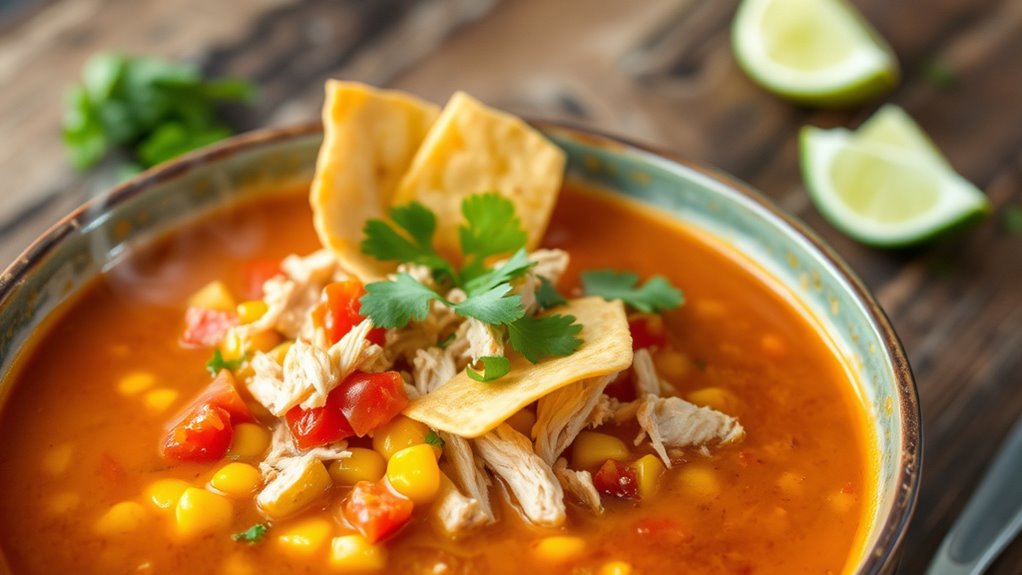
- Assemble your mise en place: heat your pot over medium heat and have broth, tomatoes, corn, beans, shredded chicken, spices, and tortilla strips within easy reach.
- Sauté aromatics first to develop depth of flavor.
- Add tomatoes and corn, then simmer to extract and blend their flavors into the broth.
- Taste the broth and adjust seasoning with cumin, chili powder, and lime juice to achieve a balanced, bright, smoky, and comforting flavor profile.
- Maintain steady heat to allow tortilla strips to soften without breaking apart.
- Stir gently to rewarm the shredded chicken, preserving its tenderness.
- Serve the soup with a clear, flavorful broth and vibrant vegetables, showcasing precise and purposeful cooking techniques.
How to Serve
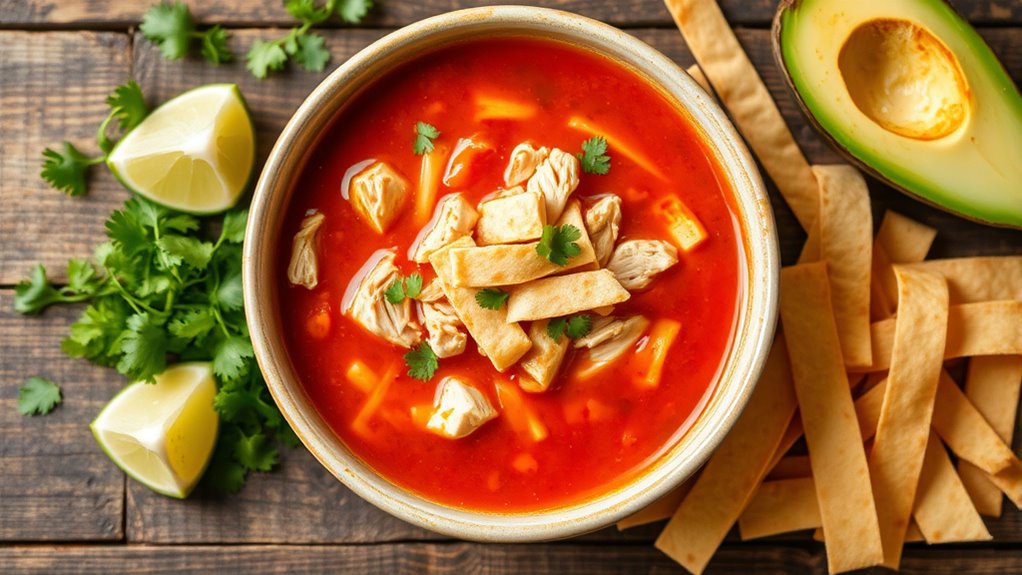
As the soup comes together, the way you serve it can sharpen its impact just as much as the simmered flavors did. You’ll want to present it simply, letting aroma and texture do the talking. Ladle into bowls, then invite contrast: a squeeze of lime for brightness, a handful of chopped cilantro for brightness and color, and a touch of avocado for richness. Consider warm tortillas on the side, cut into ribbons for dipping, not crowdsourcing the whole experience. For best toppings, offer a range—crumbled queso fresco, diced jalapeño, and shredded chicken—to let everyone tailor each bite. Serving suggestions should emphasize balance: heat with freshness, depth with light lift, and freedom in every mouthful.
Tips
Here are some practical tips to sharpen your chicken tortilla soup: start with a good base—sauté aromatics like onion, garlic, and a little cumin before the liquids to deepen flavor, then build with tomato, stock, and shredded chicken. As you cook, adjust heat and timing to coax every dimension forward, not overwhelm it. Incorporate bright notes with lime zest or a splash of vinegar, which act as flavor enhancers without masking the core, guiding your palette through the bowl. Embrace mindful simmering, tasting along the way to refine balance. For texture, finish with crisp tortilla strips or roasted corn. Regarding cooking techniques, you’ll explore gentle reduction and careful seasoning. Flavor enhancements come from restrained layering, not jam-packing everything at once.
Food Value and Benefit
Cancer soup is a nourishing and light dish that supports everyday energy and overall well-being. This recipe offers a balanced combination of nutrients that promote hydration, sustained energy, and digestive health.
Food Value:
- Hydrating broth rich in fluids for maintaining hydration
- Lean chicken providing high-quality protein for muscle repair and activity
- Vegetables supplying dietary fiber, vitamins, and minerals
- Beans or corn adding plant-based protein and complex carbohydrates for lasting energy
- Tortilla strips contributing texture without excess calories
Benefits of Eating This Recipe:
- Supports steady energy levels and reduces energy crashes
- Promotes digestive health through fiber content
- Enhances mood and stamina with a variety of vitamins and minerals
- Provides essential nutrients for immune system support and overall vitality
- Easy to customize with fresh herbs and spices to boost antioxidant intake
Key Vitamins and Minerals in the Recipe:
- Vitamin A (from vegetables) for vision and immune health
- Vitamin C (from vegetables and herbs) for antioxidant protection and skin health
- B vitamins (from chicken and beans) for energy metabolism
- Iron (from chicken and beans) for oxygen transport in the blood
- Magnesium (from beans and corn) for muscle and nerve function
- Potassium (from vegetables and broth) for electrolyte balance and heart health
Frequently Asked Questions
Can I Substitute Ingredients for Dietary Needs?
Sure—yes, you can swap ingredients for dietary needs. Ingredient swaps and dietary modifications let you tailor flavor and texture, honoring your limits while staying curious. You’ll improvise thoughtfully, investigating substitutions that suit you without sacrificing soul or spice.
What Is the Best Tortilla Soup Broth Ratio?
Best broth depends on your taste, but aim for a 1:4 to 1:5 ratio of broth to tomatoes, then adjust with spices until you feel flavor balance. You’ll taste, tweak, and decide—freedom in every simmer.
How Long Can Leftovers Keep Safely?
Leftovers keep safely for 3 to 4 days in the fridge, or up to 2 to 3 months frozen. You should monitor smell and texture, because leftover storage accepts gradual changes; Safe consumption depends on careful handling and timing.
Can I Freeze This Soup After Cooking?
Yes, you can freeze it, but beware texture changes. Freeze it with careful freezing tips, then thaw slowly; you’ll notice subtle texture shifts. You’re seeking freedom in leftovers, so embrace the change, savoring the investigative, resilient flavor.
Is This Soup Spicy or Customizable?
Yes, you can tailor it to you; spice levels are adjustable and flavor adjustments invite experimentation, letting you dial heat up or down while preserving depth, so you control the heat, aroma, and overall satisfaction without compromise.
